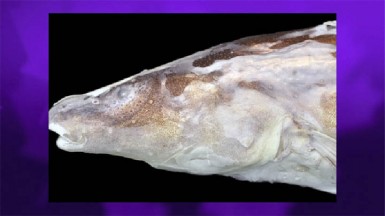The Akawaio penak, a previously unknown genus of electric fish, was recently identified by a team of international scientists in the waters of the upper Mazaruni River.
According to a CTVNews.ca report, Canadian researcher Nathan Lovejoy and his team used tissue samples collected from two earlier expeditions in 2008 and 2011 from the largely unexplored region in Guyana’s north and found that the fish’s DNA was so distinct that it represents a new genus– the classification level above species.

“We were delighted,” Lovejoy, a professor of biological sciences at the University of Toronto’s Scarborough campus, was quoted as saying in the report yesterday. The Royal Ontario Museum in Toronto and the University of Guyana co-organised the expeditions.
The fish, named after the Akawaio tribe, is described as being unlike the electric fish found in North American waters.
“It is somewhat eel-like, but the tail of the fish tapers off into basically a point,” Lovejoy said, while noting that he suspects it is nocturnal.
“The eyes of the fish are very small so that suggests it doesn’t rely on eyesight much.”
According to the report, similar to other electric fish, the Akawaio penak produces an electric field that is too weak to stun prey but is used help to communicate with other electric fish and to help it “see” in its murky habitat.
“When objects enter the electric field, they produce a distortion in the field and the fish can then detect that distortion,” Lovejoy explained.
The fish’s habitat is described as an isolated area filled with countless rivers and considered a hotspot for biodiversity. The report, however, noted that its freshwater habitat population has recently come under attack due to gold-mining in the area.





